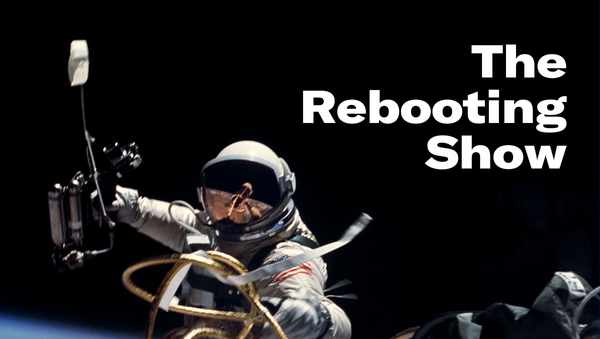News in the post-Trump era
The Trump bump could give way to the Trump slump

Thanks for reading. If you’re not a subscriber, please consider signing up. If you are, and you like The Rebooting, please consider sharing it with a colleague or friend -- and please reach out directly to me. I’ve enjoyed hearing from a lot of people and apologize if I haven’t gotten back to everyone. As I get into later, I had a bit of a Covid curveball recently. This week, I’m looking ahead to big questions for news publishers in a post-Trump era, hiring mistakes and why you shouldn’t work for free.
Publishing in a post-Trump era

The end is apparently in sight for the Trump presidency. Now come the hard part: Trying to put together the pieces after a bruising election that proved Trumpism is an enduring part of U.S. society for years to come.
The end of the Trump presidency is a bittersweet prospect for the news business. Obviously, Trump has been a dangerous demagogue who has vilified the press and accelerated the loss of trust people have in mainstream news information. On the other hand, Trump wasn’t wrong when he’d boast he was the best thing that’s happened to the news industry. From the record ratings on cable news to the surge of subscriptions at The New York Times and elsewhere, the Trump Show has delivered ratings and revenue. When that show mercifully leaves town, publishers will be faced with a set of challenges.
Where is the trust? Trump exploited weaknesses in the news industry. There’s a temptation to believe that the problems of misinformation are the fault of Trump -- or Facebook, or the Russians, etc. But the loss of trust in news has been tracked for a long time. When the votes are fully counted, 75 million Americans will have voted for a person who gleefully skewers media as corrupt. The bruising election and four years of garbage information spoon fed people from algorithms has left large swathes of the public unwilling to trust news publishers. This lack of a shared truth is a far bigger civic challenge than Trump ever was -- and for news publishers, the lack of trust is an existential challenge.
Will the Trump Bump give way to a Trump slump? It is no coincidence that The New York Times has been in its best financial shape in a long time during the Trump presidency. Trump was the perfect foil to be used as the Times shifted from an indirect ads model to a direct reader revenue model. The results speak for themselves: The Times ends the Trump presidency with nearly 7 million digital subscribers, nearly six times higher than when Trump took office. It walked up to the line of being directly oppositional to Trump, even adopting brand marketing campaigns cloaking a subscription to the Times as a form of resistance and fight for The Truth. Without Trump, the scramble to 10 million subscribers becomes more of a slog. The waning interest in politics will put more pressure on the Times and many publishers to prove value beyond virtue signaling.
What price talent? The Substack revolution -- more on this next week -- is at once profound and overblown. It’s profound in that direct revenue models open up the possibilities of new media brands that are based around top-tier talent. It’s overblown in that this is, for the most part, a niche phenomenon. Very few in the news business have the “persona brands” and wherewithal to strike out on their own. News publishers will deal with more defections of top-tier talent. The upside is there for these top stars. Publishers have usually resisted deals with top talent that gives them a meaningful cut of the business upside. That will come under pressure as publishing undergoes an unbundling cycle that empowers very top talent.
How woke do you go? Newsrooms are changing. You don’t need to go full Glenn Greenwald to understand there is an internal culture war being fought. Many reporters have rebelled against old fashioned notions of impartiality and embraced near activist postures. This is mostly a good thing, but it provides a challenge for newsroom leaders trying to maintain credibility while a new generation rejects the guardrails seen as fundamental in protecting institutional integrity. Some give is inevitable, but post-Trump the question will be how far will newsrooms go in accommodating this activism? Will Trump’s departure lead to more culture wars along the lines of the Tom Cotton op-ed revolt at the Times?
Work for money, not exposure
One of my ironclad rules is to say no out of hand to partnerships. Invariably a partnership offer is someone trying to get stuff for free. The best partnerships are those where one person or entity provides goods or services and is paid. I like those partnerships. The others, especially when I hear “exposure” and visibility,” get a pass. The problem with the value exchange for “visibility” is I’ve noticed the other side is often the one making money. Early on at Digiday, Mashable and Business Insider both wanted to do syndication deals with us. They’d get to republish select original journalism we’d created. And we’d get…. Exposure. I found this odd since they’d get ad revenue but we’d get exposure. Get paid money for the value you provide.
Hiring mistakes: Being blinded by big names
The cliche is the people are the hardest part. And they are. Recruiting great people, keeping them engaged and productive, and having a coherent team -- these are major challenges for any organization. There is an acute difficulty as a “challenger” brand in that you always feel you’re fighting an unfair fight. One of the biggest mistakes I found in recruiting is being blinded by a big name on the resume. For some that can be schooling -- Oh, Harvard…. -- but I’ve never put much stock in that for reporters. The trap I fell into a few times was seeing pedigree with the name of a big name publication. That was often a mistake. That’s not to say big name publications don’t have great people; they do. But they also have a lot of people, so there are more mediocre performers and, most importantly, people who perform best within a larger structure. I found our best hires tended to be people from what others would call “second-tier” publications. But what separated them was they were at the point of their careers where they were ready to put in the work needed to make great strides toward mastering their crafts and beats.
Covid report
On Monday, Oct 26, after seven months of wearing a mask and avoiding all humans who aren’t my wife, I got the news: I was positive for Covid-19. I’d felt shitty all weekend, mostly just aches and some chills, no fever or cough. I’ve been extremely lucky in many ways. Now, 10 days later, I am back to being negative.
It just takes a minor slip. I still don’t know when I got the virus. I traveled to Mexico City for three weeks after leaving Digiday. I thought the risk here was manageable, since the case load there was lower per capita than where I live, in Miami. The precautions in Mexico were more stringent than here. The catch: My pursuit of mole did lead to me to dine indoors a few times. My guess is I picked it up either at Pujol or at the weirdly crowded Mexico City airport on the way back. Either way, that wiped away seven months of isolation.
This is one random illness. I am extremely thankful that I’m healthy, without any pre-existing conditions that would augur for a difficult course. As it turned out, my case was mostly symptom-free, outside of fatigue and a couple days of aches. At one point, I felt like I was losing my sense of taste. But I ordered delivery barbecue for the Eagles game on Sunday to be sure I still had my sense of taste. And thankfully, I never gave the illness to my wife.
Temperature checks are health theater. Arresting this virus would be a lot easier if there wasn’t asymptomatic spread. I never had a temperature above 98.3F. My hope is I didn’t spread this to others, particularly those more vulnerable or with close relatives with risk factors. I’ll never know for sure, but I do know the steps taken to make people “feel secure” are mostly for show rather than effectiveness. Masks and distancing are the best defenses until there’s a vaccine.
Non-election reading
We had a Digiday newsroom joke about pre-written company obituaries. Quibi was always a candidate. The problems it faced were obvious, but there is always utility into getting the insider view of what went wrong. The WSJ has a classic autopsy that’s worth reading as a reminder that even those who are the most accomplished are, at some level, making it up as they go.
On the lack of trust, N+1 has a fascinating anonymous Q&A with a hedge fund trader. The key thing worrying this trader: The disappearance of “civic culture” around a shared set of facts. That’s going to be a long-term project to repair.




